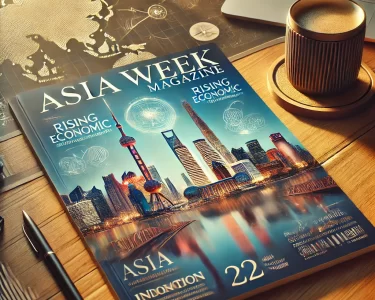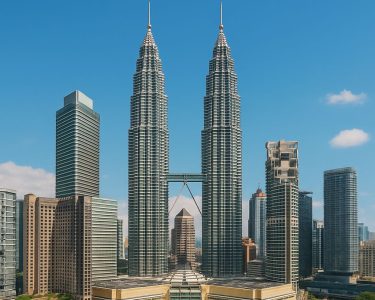China’s meteoric rise from a struggling developing nation to the world’s second-largest economy is nothing short of remarkable. In just a few decades, it has lifted hundreds of millions out of poverty, built a world-class infrastructure network, and positioned itself as a dominant player in global trade. However, despite its economic achievements, China now faces a formidable challenge—the middle-income trap. As its economy matures, growth is slowing, structural inefficiencies are becoming more apparent, and the window for escaping this trap is rapidly closing.
Also Read:- The Origins of Buddhism: A Journey Through Time
Understanding the Middle-Income Trap
The middle-income trap refers to a situation where a country successfully moves from a low-income economy to a middle-income one but then struggles to transition into a high-income economy. Many nations find themselves stuck in this limbo due to declining productivity, diminishing returns from labor-intensive industries, rising wages, and an inability to foster innovation-driven growth.
For China, this is a looming threat. Historically, only a few nations—such as South Korea and Singapore—have managed to break free from the middle-income trap, while many others, including Brazil, Thailand, and South Africa, have stagnated. The question is whether China can chart a different course or if it is already running out of time.
China’s Economic Slowdown: A Warning Sign?
In recent years, China’s economic growth has slowed from the double-digit figures that defined its boom years to a more modest pace. Several factors contribute to this slowdown:
- Aging Population and Declining Workforce
China’s working-age population peaked in 2014 and has been declining ever since. With one of the world’s fastest-aging populations due to decades of the one-child policy, the country is facing a shrinking labor force. Fewer workers mean higher labor costs, which reduces China’s competitiveness in labor-intensive manufacturing—the very sector that fueled its initial economic rise. - Rising Wages and Lost Cost Advantage
As wages continue to rise, China is losing its status as the world’s factory. Many multinational corporations are shifting production to lower-cost alternatives like Vietnam, Bangladesh, and India. This trend is eroding China’s traditional manufacturing edge, forcing the country to seek new drivers of economic growth. - Debt and Real Estate Crisis
China’s rapid expansion was fueled by massive investments in infrastructure, real estate, and state-owned enterprises (SOEs). However, much of this growth was debt-driven. The ongoing real estate crisis, particularly the collapse of major developers like Evergrande, has exposed deep structural weaknesses in China’s economic model. The reliance on property for wealth creation is no longer sustainable, and the government must find new ways to stimulate economic activity. - Weak Domestic Consumption
Unlike the United States, where consumer spending drives the economy, China remains highly dependent on exports and investment. Household consumption as a percentage of GDP is relatively low, indicating that domestic demand is not strong enough to sustain high growth. - Geopolitical Pressures and Supply Chain Shifts
Trade tensions with the United States, decoupling efforts by Western nations, and supply chain diversification strategies are placing additional strain on China’s economic future. Many global companies are reducing their reliance on Chinese manufacturing, further limiting its growth prospects.
China’s Innovation Dilemma: Can It Compete with the West?
To escape the middle-income trap, a nation must transition from low-cost manufacturing to an innovation-driven economy. China has made strides in this area, particularly in sectors such as artificial intelligence, electric vehicles, and fintech. However, challenges remain:
- Intellectual Property and Technological Independence
China has long been criticized for intellectual property theft and forced technology transfers. While it has improved its innovation ecosystem, many of its leading companies still rely heavily on Western technology, particularly in areas like semiconductor production. The recent U.S. sanctions on advanced chip exports to China highlight this vulnerability. - Education and Research
While China produces millions of STEM graduates each year, its education system is still criticized for lacking creativity and independent critical thinking. The ability to foster homegrown technological breakthroughs remains a key challenge. - Regulatory Crackdowns
The Chinese government’s unpredictable regulatory environment has also hindered innovation. The crackdown on big tech firms such as Alibaba and Tencent sent shockwaves through the private sector, making it harder for entrepreneurs to thrive. This regulatory uncertainty discourages investment and stifles growth.
Also Read:- Music and Islam: A Deeper Look
The Road Ahead: Can China Still Break Free?
While the challenges are significant, China still has opportunities to escape the middle-income trap:
- Boosting Domestic Consumption
If China can transition from an export-driven economy to one fueled by domestic consumption, it could create a more sustainable growth model. Policies that increase wages, improve social security, and enhance consumer confidence will be crucial. - Investing in High-Tech and Advanced Manufacturing
China must continue its push into high-tech industries, particularly semiconductor manufacturing, biotechnology, and renewable energy. Becoming self-sufficient in critical technologies will be essential for long-term economic stability. - Encouraging Private Sector Growth
The government must create a more business-friendly environment by reducing excessive regulation, supporting startups, and ensuring a stable legal framework for businesses to thrive. - Urbanization and Infrastructure Modernization
China still has room for urbanization-driven growth. Investing in smart cities, 5G infrastructure, and AI-driven urban planning could provide new economic momentum. - Geopolitical Strategy and Trade Diversification
Instead of relying solely on Western markets, China must strengthen economic ties with emerging economies in Africa, Latin America, and Southeast Asia. Initiatives like the Belt and Road Initiative (BRI) can help open new growth avenues.
Final Thoughts
China’s window to escape the middle-income trap is narrowing. With an aging population, rising wages, geopolitical tensions, and an uncertain global economic landscape, the country must act swiftly and decisively. While it has the potential to transition into a high-income economy, doing so will require bold economic reforms, significant technological advancements, and a shift towards domestic-driven growth. The next decade will be crucial in determining whether China can break free from stagnation or fall into the same trap that has ensnared so many middle-income nations before it.
If China fails to adapt, it risks becoming another cautionary tale—an economic powerhouse that rose rapidly but fell short of reaching its full potential.




